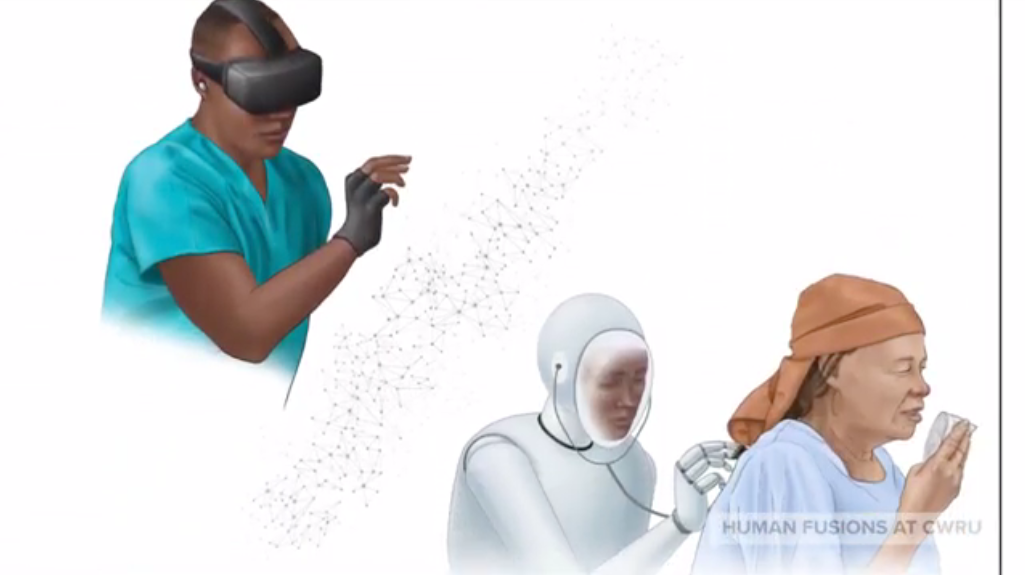CLEVELAND — The future is now, and it’s being built right here in Cleveland.
On August 24, 2020, a Case Western Reserve University Student picked up a banana, held it in his hand, and truly felt the banana in his grasp. The thing is, that banana was 2,300 miles away, in a robotics lab at UCLA.
Dustin Tyler is the Kent H. Smith Professor of Biomedical Engineering at CWRU, the founder of the University’s Human Fusions Institute, and a researcher for the Cleveland VA Medical Center. He’s leading the team behind this exciting new technology.
“One of the students here in Cleveland was essentially moving his hand, which the robot in UCLA was mimicking, and so he was grabbing with that robot and could feel when a banana was put in the hand, he felt like he was holding it in his hand in Cleveland,” Tyler explained.

The moment was possible thanks to new technology called NeuroReality. As Tyler explained it, we all have sensors in our fingers that connect to our brains. NeuroReality interacts with that wiring by connecting you to a robot with a ring on your finger, allowing you to feel what the robot feels.
“This began with prosthetics work where we had people that would have an artificial limb,” he said. “They could put it on, they could touch something and then they would feel it like their hand. So that was the beginning.”
The Institute has come a long way since then.
With this new NeuroReality technology, “we could actually put the [robotic] hand anywhere in the world and they’ll still feel it like their hand,” Tyler said.
Of course, they didn’t do all this work just to pull off a cross-country banana stunt. The applications are plentiful. Especially now, during a pandemic.
“Rather than the doctor having to go in and directly interact with the covid patient in gowning up and all these other kinds of stuff and putting their health at risk if you had a robotic system that the doctor could essentially put on, he goes to his virtual reality system and now he moves out with the hand, the hand touches the patient and does what it needs to and he feels that interaction.”

If the image of a robot hand conducting your examination doesn’t exactly inspire comfort, Tyler said it’s time to change the way we think about robots. With NeoruReality, he said, the robot’s touch would be as gentle as a human.
There are also space and military applications, such as allowing someone to work on the International Space Station without having to leave Earth. For the military, Tyler explained “these roadside bombs, improvised explosives, that's one of the most dangerous jobs in the military right now. About half the people tend to, unfortunately, lose their lives doing this. The robotic systems that exist now are pretty poor, not very good with the fidelity of the hands. If we could take the same thing and now the person in the robot could go out and have all the same skills that they do by working on it directly, but through a robotic system, they may not need to any longer go physically be there.”
That’s all just scratching the surface of this new technology’s potential. Imagine logging into a computer with your NeuroReality ring on and controlling a crane with your hand. “While you might be picking up what feels like a Lego, the crane is picking up a two-ton construction block,” Tyler said.
This could even mean allowing a soldier stationed overseas to slip on the ring and hold their child’s hand from across the world.
The banana experiment back in August was possible thanks to robotics developed by the Department of Mechanical and Aerospace Engineering at UCLA. So while CWRU has the ring, it’s hoping other developers will step up to create the robotics to help this technology truly reach its potential.
The Human Fusions Institute is hosting a virtual event Thursday morning at 11:00 a.m. to talk more about their breakthrough. You can register to attend for free if you want to listen in.



